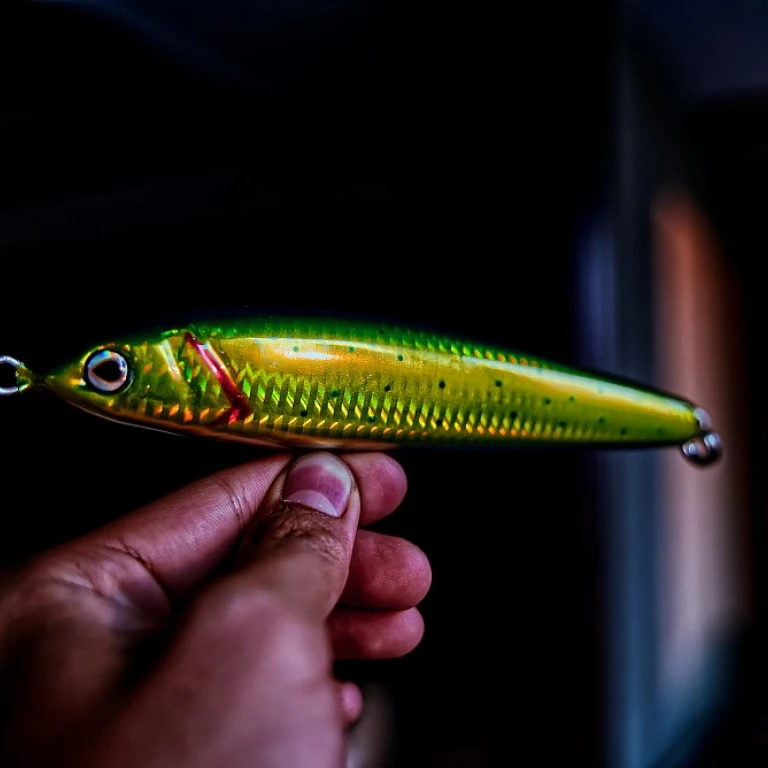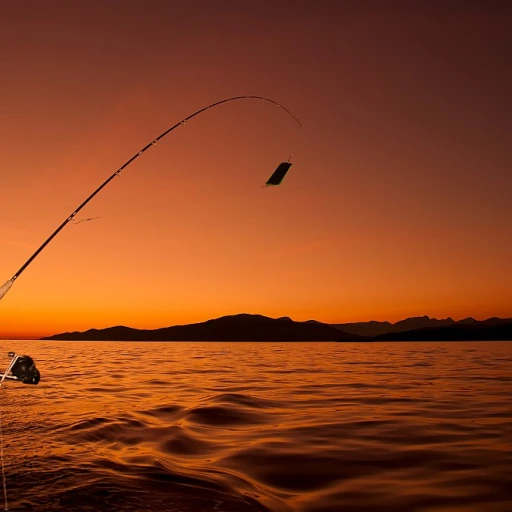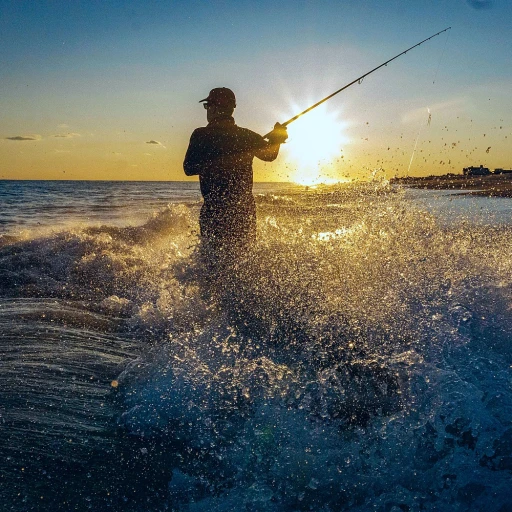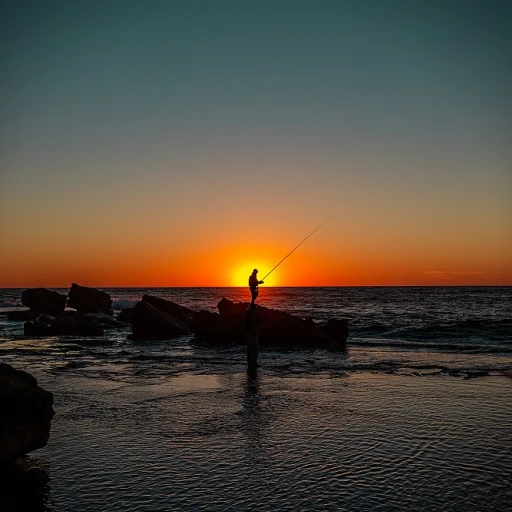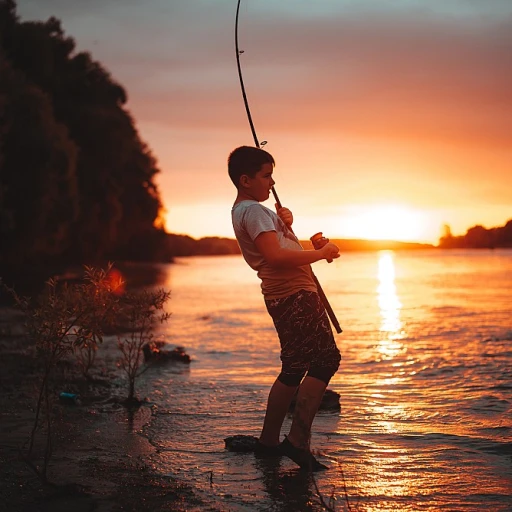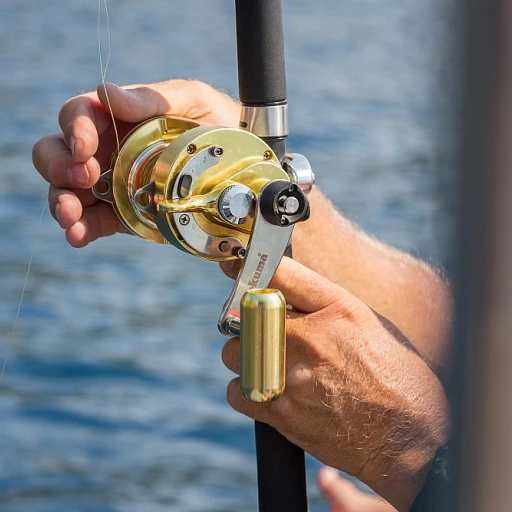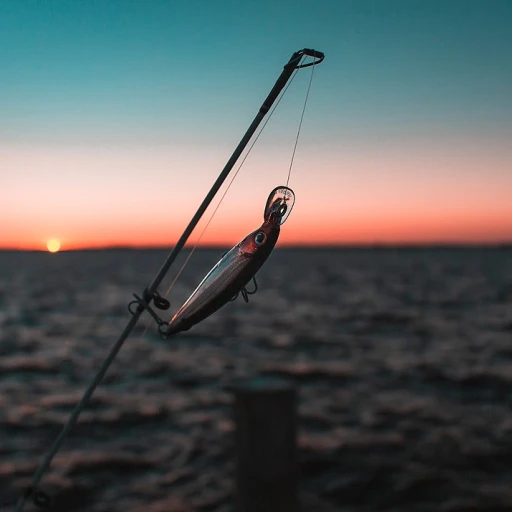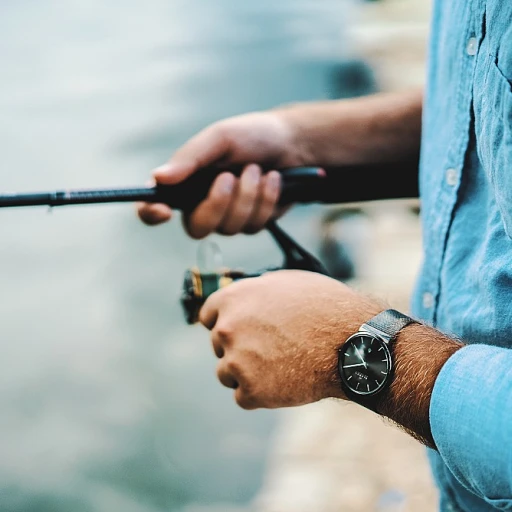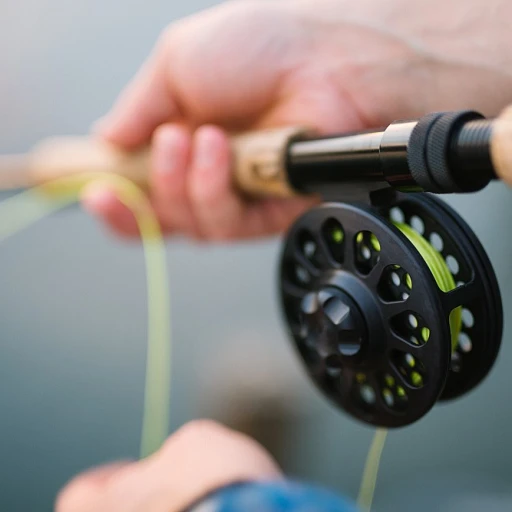Understanding Catfish Behavior
Get to Know Your Catfish
Before you can catch catfish, you need to know what makes them tick. These whiskered fish are not just bottom-dwellers; they’re savvy survivors found in various waters across North America. Whether you’re after the hefty blue catfish, the feisty channel catfish, or the elusive flathead catfish, understanding their behavior is key.
Where Catfish Hang Out
Catfish love to lurk in large rivers, lakes, and reservoirs. They often hide near structures like logs or rocks, where they can ambush their prey. The blue catfish and channel catfish are known to favor deeper waters, while the flathead catfish prefers shallower spots with plenty of cover. Knowing where to find them is half the battle.
Time and Temperature
Catfish are most active when the water warms up, usually in late spring and summer. They’re also nocturnal feeders, so night fishing can be especially productive. Pay attention to water temperature and seasonal changes to increase your chances of a successful catfish catch.
The Senses of a Catfish
Catfish have a keen sense of smell and taste, thanks to their chin barbels and pectoral fins. These help them detect food in murky waters. Their anal fin and other sensory organs make them excellent hunters. Use this to your advantage by selecting the right bait, which we’ll cover in more detail later.
Personal Tales from the Water
Many anglers have stories of the one that got away, but understanding catfish behavior can turn those tales into triumphs. Remember, patience is key. Whether you’re using a trusty rod reel or trying out new techniques, knowing your fish can make all the difference.
Essential Gear for Catfish Fishing
Gear Up for Success
Don't just jump into catfish fishing thinking it's a done deal with any old rod. Picking out the right gear can make or break your catfish catch. Start with a good rod. Ideally, a medium-heavy to heavy action casting rod, as catfish are known for their strong and stubborn fight, especially if you're targeting big blues or flathead beauties. Pair it up with a robust reel. A baitcasting or spinning reel with a strong drag system is your best bet to reel in these hefty fish.The Perfect Bait
Picking bait is like choosing the perfect seasoning for your meal. What your catfish goes for can vary from state to state. Channel cats, for example, are drawn toward smelly concoctions like stink baits or nightcrawlers, while blue catfish might fancy cut fish or shad. Flathead catfish prefer their meals live, so live bait like a juicy crayfish or small white catfish could do the trick. Understanding the diet of each species is key to a successful fishing day.Serious Strategies and Techniques
Let's get tactical. Do your homework on local water conditions and catfish behavior. Catfish love deep holes in large rivers, murky water, or places with plenty of natural cover. Channel catfish and blue channel often roam in schools, so where you catch one, you might catch more. Use bottom fishing techniques; catfish are bottom-dwellers with their chin barbels scanning the waters for food. Maintain a slow, steady retrieve to tempt them into biting. If you're into variety, explore flats skiff fishing. It's a versatile approach that could help you access shallow waters where the flatheads might lurk. Dive into more on flats skiff in the ultimate guide.Safety First
While catfish fishing can be thrilling, safety shouldn't take a backseat. Those pectoral fins on catfish are not just for show—they're sharp and can inflict some serious pain if handled improperly. Always keep a first aid kit handy when out on the water and wear protective gloves for handling. If you're out fishing at night, ensure your boat is equipped with proper navigation lights. It's all about being prepared, like a true angler.Sustain and Conserve
Catfish anglers, listen up! Let's keep it sustainable. Respect size limits and state regulations to ensure future generations can experience the joy of catfish fishing. Release a portion of your catch if you're lucky enough to land a record-sized fish. Practicing catch and release helps maintain the health and stock of catfish species in North America's waters. Preserve the thrill for tomorrow's fishing enthusiasts. Sources:- American Catfisherman Magazine
- Field & Stream Magazine
Bait Selection: What Attracts Catfish
Getting the Right Lure for the Job
When it comes to catching catfish, the bait you choose can make or break your fishing trip. Catfish, those whiskered wonders of the water, are known for their keen sense of smell. This means that what you use to lure them in is crucial. Whether you're after channel cats, blue catfish, or the elusive flathead catfish, picking the right bait is your ticket to success.
Natural Baits That Catfish Love
Catfish are not picky eaters, but they do have their favorites. Live bait like worms, minnows, and shad are a hit among catfish anglers. These baits mimic the natural prey found in large rivers and lakes, making them irresistible to catfish species. Chicken liver is another popular choice, especially for channel catfish. Its strong scent travels far in the water, attracting catfish from a distance.
Artificial Baits and Their Appeal
While natural baits are a go-to, artificial baits also have their place in catfish fishing. Dough baits, often made with a mix of cheese and other strong-smelling ingredients, can be just as effective. These baits are easy to mold onto your hook and stay put, even in fast-moving waters. Some anglers swear by stink baits, which are specially formulated to attract catfish with their potent aroma.
Understanding Catfish Preferences
Different catfish species have different preferences. Blue catfish, for instance, often go for larger baits like cut fish or even small carp. Flathead catfish, on the other hand, are more likely to be tempted by live bait due to their predatory nature. Understanding these preferences can help you tailor your bait selection to the specific species you're targeting.
Experiment and Adapt
Every fishing spot is unique, and what works in one state might not work in another. It's all about experimenting with different baits and seeing what the catfish in your area respond to. Don't be afraid to switch things up if you're not getting any bites. Sometimes, a simple change in bait size or type can turn your day around.
Remember, the thrill of catfish fishing lies not just in the catch, but in the chase. So, get out there, try different baits, and enjoy the adventure!
Fishing Techniques for Catfish
Mastering the Right Techniques
When it comes to catfish fishing, using the right techniques can make all the difference between a successful day on the water and going home empty-handed. Whether you're after the elusive blue catfish or the feisty channel cats, understanding the behavior of these whiskered creatures is key.
First, let's talk about location. Catfish species like to hang out in areas with plenty of cover. Look for spots with submerged logs, rocks, or deep holes in large rivers. These spots are like catfish hotels, offering them shelter and a buffet of food.
Choosing the Right Rod and Reel
Having the right gear is crucial. A sturdy rod and reel are essential for handling the size and strength of catfish. Opt for a medium-heavy rod that can handle the fight of a large flathead or blue catfish. Pair it with a reel that has a good drag system, so you can tire out the fish without breaking your line.
Mastering the Art of Casting
When casting, aim for areas where catfish are likely to be hiding. Cast your bait near structures or drop-offs where the water depth changes. Catfish are bottom feeders, so let your bait sink and keep it close to the bottom. Use a slow and steady retrieve to mimic the movement of natural prey.
Using the Right Bait
Bait selection is crucial in attracting catfish. Live bait like worms or small fish often works best, but don't shy away from using cut bait or chicken liver. The strong scent of these baits can lure catfish from a distance. Remember, different catfish species might prefer different baits, so it’s worth experimenting to see what works best in your state.
Patience and Persistence
Fishing for catfish requires patience. Sometimes, it might take a while for the fish to find your bait. Stay patient, keep your line in the water, and be ready for that tug. When you feel a bite, give the fish a moment before setting the hook. This gives the catfish time to fully take the bait, increasing your chances of a successful hookset.
By mastering these techniques, you'll increase your chances of landing that record-breaking catfish. Remember, every angler has their own style, so don’t be afraid to adapt these tips to suit your personal fishing style.
Safety Tips for Catfish Anglers
Stay Safe While Reeling in the Big Ones
Fishing for catfish can be thrilling, especially when you're after those large blues or flathead catfish. But before you cast your rod reel into the water, it's important to keep safety top of mind. Whether you're fishing in large rivers or smaller bodies of water, being prepared can make all the difference.
Know Your Surroundings
Always be aware of your environment, especially when fishing in unfamiliar states or waters. Check local weather conditions and be mindful of the water's current. A sudden change in weather can affect not only the fish behavior but also your safety. Keep an eye on the sky and be ready to pack up if things start looking dicey.
Handle with Care
Catfish are known for their sharp pectoral and anal fins. These can cause painful injuries if you're not careful. When handling your catch, use a towel or gloves to protect your hands. Remember, channel cats and blue catfish can be quite feisty, especially when they're large in size. Always use proper tools to unhook your catch safely.
Gear Up for Safety
Having the right gear isn't just about catching fish; it's also about staying safe. Life jackets are a must, particularly when fishing from a boat. Make sure your gear is in good condition, from your rod to your bait and tackle. A well-maintained rod reel can prevent accidents, and having a first aid kit on hand is always a good idea.
Watch Your Step
Fishing near water can be slippery business. Whether you're on a muddy riverbank or a rocky shore, pay attention to where you step. A slip could mean more than just a wet foot; it could lead to serious injury. Wear shoes with good grip and take your time moving around.
Buddy System
Fishing alone can be peaceful, but having a buddy can enhance safety. If something goes wrong, having someone there can make a huge difference. Plus, sharing the experience of catching a record-sized blue catfish with a friend adds to the joy of fishing.
By keeping these safety tips in mind, anglers can focus on what they love most: the thrill of the catch and the serenity of the water. Whether you're after a channel catfish or a mud cat, staying safe ensures that your fishing adventures remain enjoyable and memorable.
Sustainable Fishing Practices
Practice Responsible Catfish Fishing
Fishing for catfish is a delightful pursuit, but keeping our waters healthy and our anglers happy means practicing responsible measures. Whether you're chasing the legendary blue catfish or jigging for channel cats, it's important to leave nature as you found it, if not better.Catch and Release Practices
For those who love the thrill of the catch yet aren't in need of the meat, practicing catch and release is a noble choice. Here are a few pointers to keep in mind:- Use circle hooks to increase the survival rate of released fish.
- Minimize the handling of fish. Wet your hands first to protect their slime coat.
- Quickly return fish to the water to avoid stress.
- Be gentle while removing hooks. If the hook is swallowed, consider cutting the line close to the fish's mouth.

